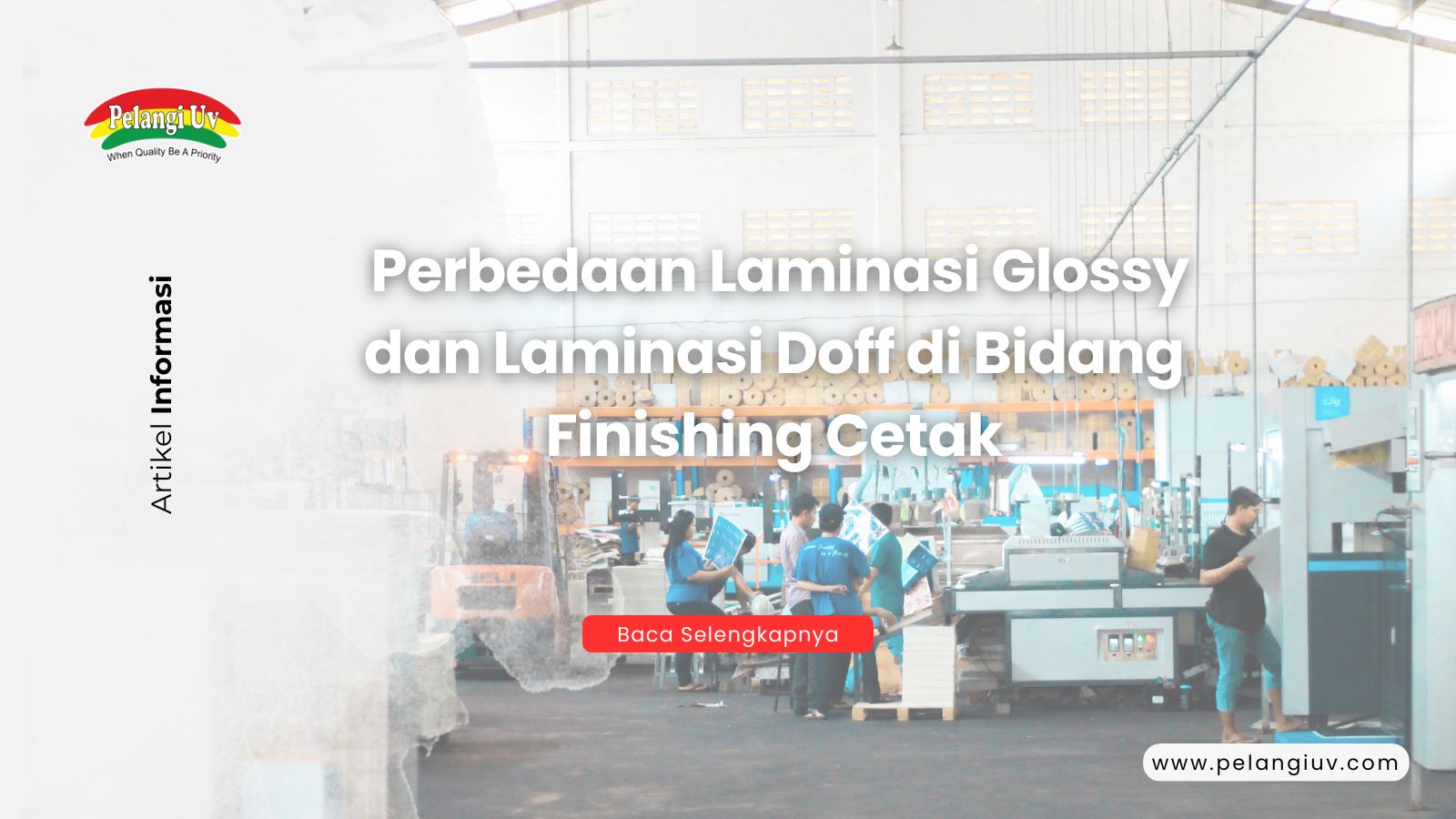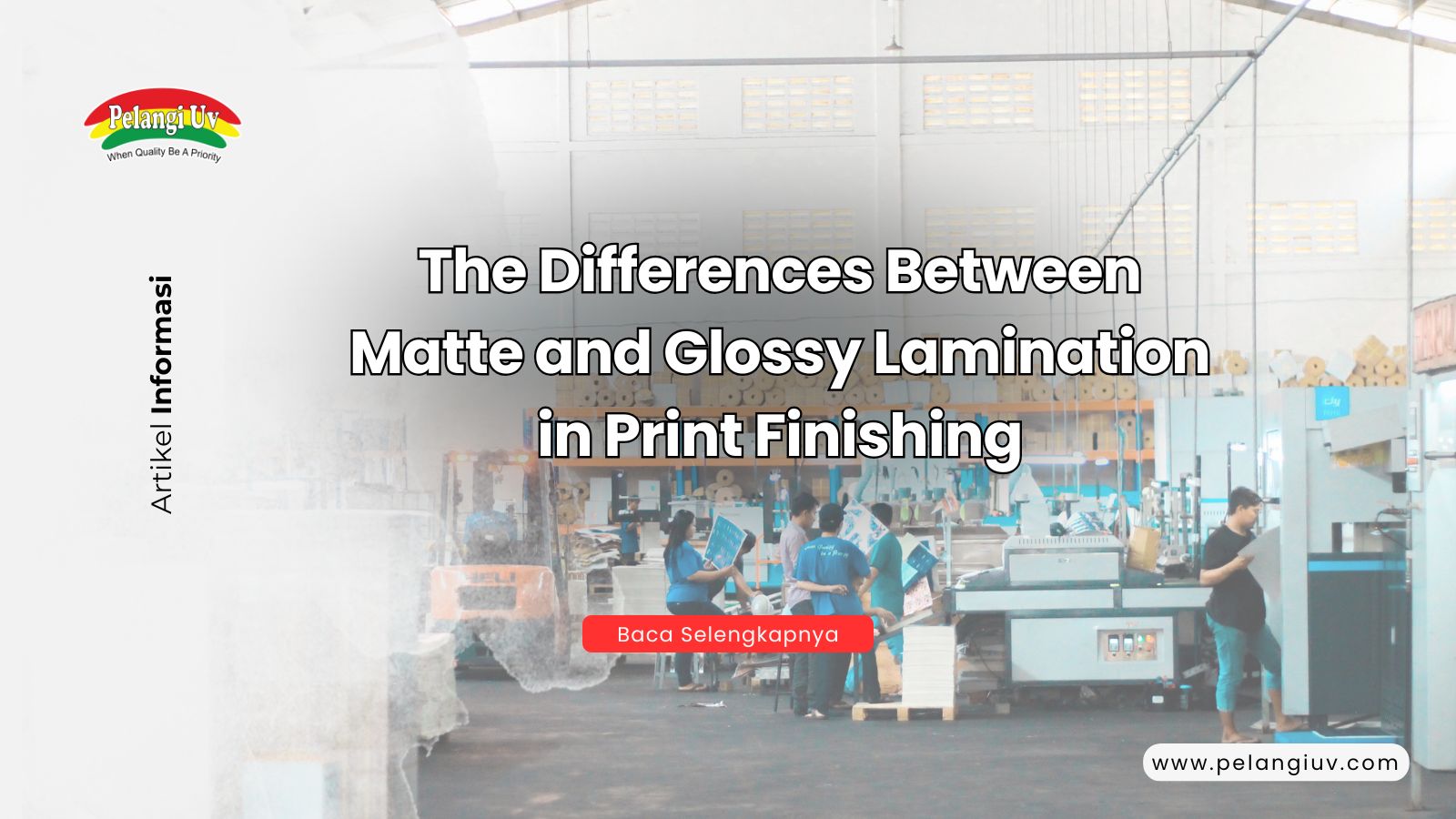The Differences Between Matte and Glossy Lamination in Print Finishing
Lamination is one of the most popular print finishing techniques, used to protect and enhance the visual quality of printed materials. Two common types of lamination are matte and glossy. Each has unique characteristics that can create different effects on the final product. This article explores the key differences between matte and glossy lamination and the benefits of each, helping you choose the most suitable option for your needs.
What is Matte Lamination?
Matte lamination offers a smooth, non-reflective finish. It is often used to create an elegant and professional appearance.
Key Features of Matte Lamination:
- Smooth Finish: The surface does not reflect light, creating a softer look.
- Premium Aesthetics: Adds a professional and exclusive touch to printed materials.
- Easy to Read: Ideal for text-heavy materials as it avoids glare.
- Fingerprint Resistant: Less likely to show fingerprints or smudges.
Common Applications for Matte Lamination:
- Business cards
- Corporate brochures
- Book covers
- Formal invitations
Matte lamination is often chosen by those who want to make a strong first impression. For example, a matte laminated business card conveys a solid, elegant, and durable appearance, reflecting the professionalism of its owner.
What is Glossy Lamination?
Glossy lamination provides a shiny, reflective finish. It is often used to create visually striking and colorful prints.
Key Features of Glossy Lamination:
- Shiny Effect: Reflects light, creating a bright and eye-catching appearance.
- Enhanced Colors: Makes colors appear more vivid and sharp.
- High Visual Appeal: Ideal for highlighting graphic designs or images.
- Less Fingerprint Resistant: The shiny surface is more prone to showing smudges.
Common Applications for Glossy Lamination:
- Posters
- Promotional brochures
- Photographs
- Product catalogs
In marketing, glossy lamination is the go-to choice for promotional materials because of its vibrant and attention-grabbing effect. A glossy brochure, for instance, can captivate potential customers with its bright and striking visuals.
Matte vs. Glossy Lamination: A Comparison
Advantages and Disadvantages of Each Type
Advantages of Matte Lamination:
- Provides an elegant and sophisticated look.
- Non-reflective, making it comfortable for reading.
- Resistant to fingerprints and smudges.
- Ideal for minimalist designs.
Disadvantages of Matte Lamination:
- Colors appear less vibrant compared to glossy.
- Less effective for high-visibility promotional needs.
Advantages of Glossy Lamination:
- Colors appear more vivid and lively.
- Creates a visually striking effect.
- Perfect for marketing materials that grab attention.
Disadvantages of Glossy Lamination:
- More prone to fingerprints and smudges.
- Reflective surfaces may interfere with readability.
How to Choose the Right Lamination?
Choosing between matte and glossy lamination depends on the intended use and the desired effect:
- For an elegant and professional look: Opt for matte lamination. Ideal for formal materials such as business cards or exclusive invitations.
- For vibrant and attention-grabbing visuals: Choose glossy lamination. Perfect for posters or promotional brochures with rich graphics.
- For durability and frequent handling: Matte lamination is better at resisting fingerprints and smudges, making it suitable for frequently touched products.
For instance, a product catalog aimed at premium clients may benefit more from matte lamination, while glossy lamination is more effective for public promotional posters.
Case Studies: Real-World Applications of Lamination
1. Professional Business Cards A consulting firm chose matte lamination for their business cards. The result was a professional and classy look, aligning with the company's image.
2. Event Promotion Brochures A music event organizer used glossy lamination on their brochures. The bright colors and shiny finish helped attract potential attendees.
3. Book Covers An author selected matte lamination for a fiction novel. The soft and understated finish complemented the theme of the story.
4. Product Catalogs A cosmetics company uses glossy lamination for their product catalogs. The vibrant and appealing visuals made their products more enticing to prospective buyers.
Trends in Lamination Today
In recent years, there has been an increasing demand for matte lamination as more brands aim for a premium appearance. However, glossy lamination remains the top choice for promotional materials due to its strong visual impact. The combination of both has also gained popularity, where specific parts of a print are laminated with glossy (spot UV) to highlight key elements.
Conclusion
Matte and glossy laminations each bring unique benefits that add value to printed materials. Matte lamination provides an elegant and professional touch with a smooth texture, while glossy lamination offers a bright and dynamic look that grabs attention. By understanding these differences, you can choose the type of lamination that best suits your printing needs and goals.


